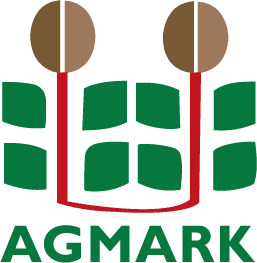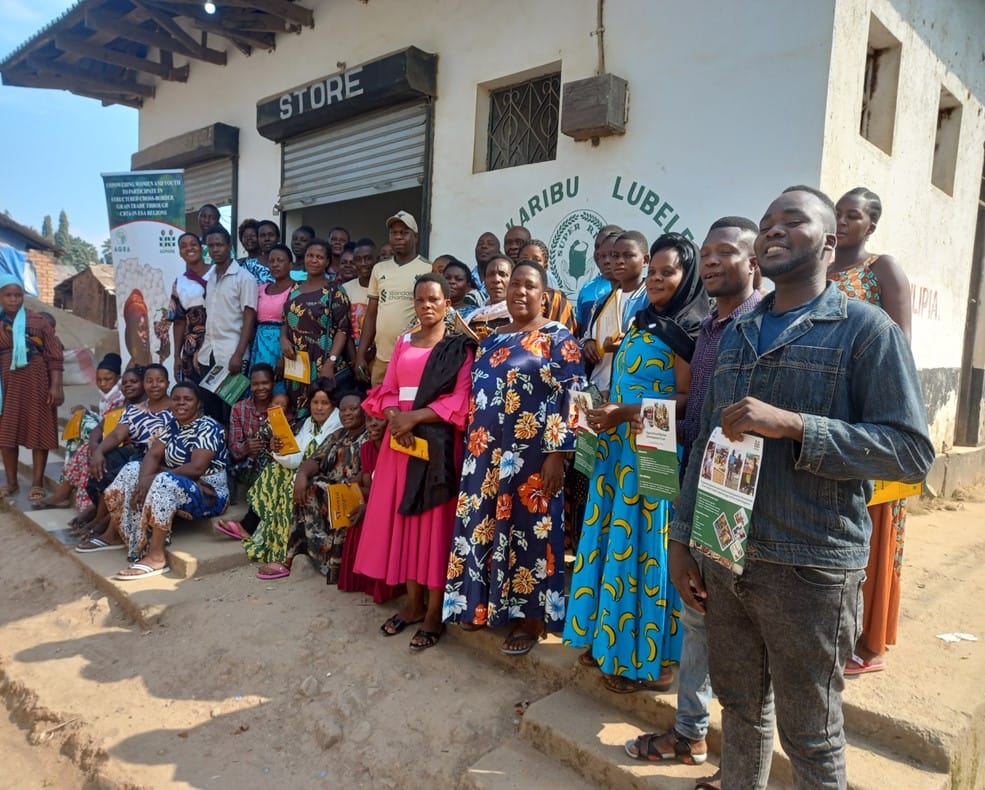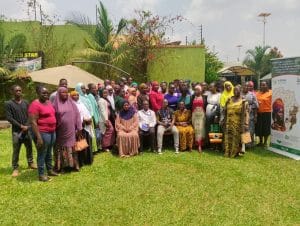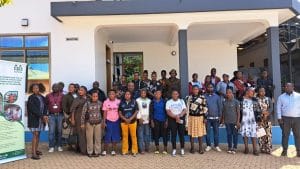The wave of youth traders in cross border grain trade continues to grow stronger. This time, it’s the Kasumulu border in Tanzania that’s witnessing the birth of a transformative movement, putting women and youth traders at the center of structured, sustainable grain commerce.
AGMARK, in partnership with AGRA, has successfully established the Kasumulu Cross Border Trade Association, marking another milestone in the regional initiative to empower women and youth traders across East and Southern Africa.
Between August 11 and 26, 2025, AGMARK conducted comprehensive mobilization, training, and institutional setup activities that transformed independent traders into an organized, government-recognized collective ready to compete in structured markets.
The Kasumulu Cross Border Trade Association will give a voice, visibility, and economic power to traders who have long operated in the informal sector, often invisible to policy makers and market systems that could amplify their impact.
Also Read: AGMARK Proudly Launches Songwe Cross Border Trade Association in Malawi
How AGMARK Mobilized Youth and Women Traders in Kasumulu
AGMARK worked hand-in-hand with local government to ensure alignment, legitimacy, and secured clearance and focus for mobilization and the upcoming training.
We were primarily interested in individuals actively trading grain at the Kasumulu border, with strong preference for women and youth. The focus was on those working in trader shops, those drying and transporting grain, and workers in storage operations.
Building Governance Skills for Women and Youth Traders
AGMARK delivered a focused one-day Leadership and Governance training that equipped eight interim youth and women leaders with the skills to lead with accountability, transparency, and strategic vision.
But the training didn’t stop there. A comprehensive three-day Structured Trading Systems program was rolled out for all CBTA members, covering critical topics like contract negotiation, quality standards, market access, and compliance with cross-border trade regulations.
The Participation of government officials also made the training highly impactful.
- Mr. Joachim Kimoso from the Tanzania Revenue Authority (TRA) delivered a presentation on compliance issues, breaking down what’s often seen as bureaucratic red tape into practical knowledge that traders could immediately apply.
- Gervas Mbawala from the Tanzania Plant Health Protection Agency (TPHPA) presented on regulatory requirements in grain trade, ensuring that traders understood not just how to trade, but how to trade legally and sustainably.
These talks formed bridges between informal women and youth traders and formal systems, between youth ambition and government support, between potential and opportunity.
Tanzania Revenue Authority Recognizes New Kasumulu Cross Border Trade Association
Women and youth traders, many of whom have operated in the shadows of informal trade for years, now have direct lines of communication with the very government agencies that regulate their work. The local administration, led by the area chief and local authority head, also participated in the training and threw their support behind the newly formed CBTA.
This collaboration and recognition is crucial for the long-term economic development strategy of the community, especially at a time when there are increasing regional trade rows between Tanzania and Malawi, despite the establishment of a free trade area.
Overcoming Cross Border Trade Challenges at Kasumulu Border
Limited network coverage and low smartphone penetration created significant challenges when delivering training on digital information systems and market platforms. In an era where market intelligence depends on real-time data, the technology gap at remote border points remains a huge barrier. Just like their counterparts across the border in Songwe, Malawi, the information gap persists. Accurate, up-to-date information on cross-border traders’ associations in the region is virtually nonexistent. This challenge underscores the need for infrastructure investment alongside skills training.
Language barriers also emerged because training tools are designed in English, and substantial time was spent translating materials into Kiswahili. While translation is very doable, it’s a reminder that truly inclusive programs must be multilingual by design.
Independent trader mindset posed convening challenges. Traders who’ve spent years operating solo needed convincing that collective action could benefit them. But once interim officials were in place and the vision became clearer, momentum followed. Trust takes time, but it’s worth the investment.
Future Plans for Youth-Led Cross Border Trade in East Africa
- Close collaboration to strengthen organizational capacity and market access.
- Supporting government registration to give the association full legal standing and long-term sustainability.
- Monitoring integration into the Joint Border Coordination Committees (JBC), ensuring the CBTA has a seat at the decision-making table.
Kasumulu now joins a growing network of youth-led cross border trade associations at strategic border points across East and Southern Africa—Busia, Songwe, Namanga, and Tunduma-Nakonde. Each new CBTA strengthens the regional ecosystem, creating a pipeline of empowered traders who understand structured markets, know their rights, and have the skills to compete.
- Collective bargaining power for better prices and market access.
- Legal recognition and protection under formal trade systems.
- Access to training, finance, and market intelligence that individual traders can’t access alone.
- A voice in policy discussions that shape trade regulations and border operations.
- Peer support networks that reduce isolation and build resilience
For women and youth traders who’ve long been marginalized in informal trade, CBTAs are pathways to economic dignity and sustainable livelihoods. The future of cross-border grain trade in East Africa isn’t being planned in boardrooms. It’s being built at border markets by women drying maize in the sun, youth managing storage facilities, and traders brave enough to believe that organized, structured trade is possible. The movement is growing. Border by border. Trader by trader. And it’s unstoppable.





